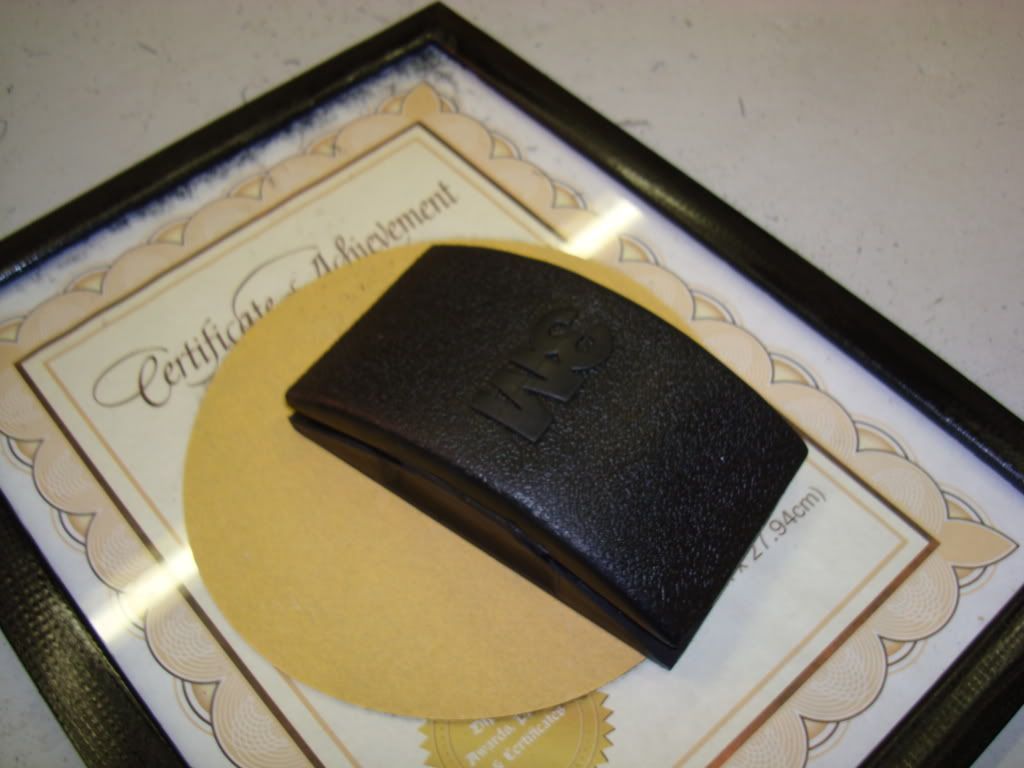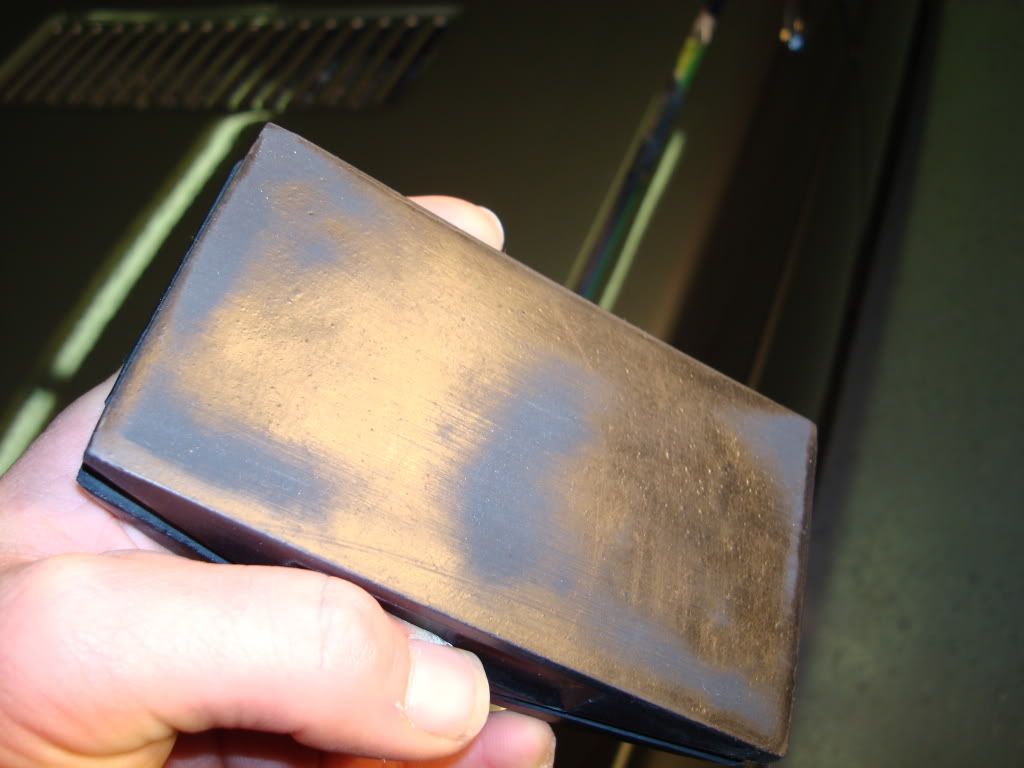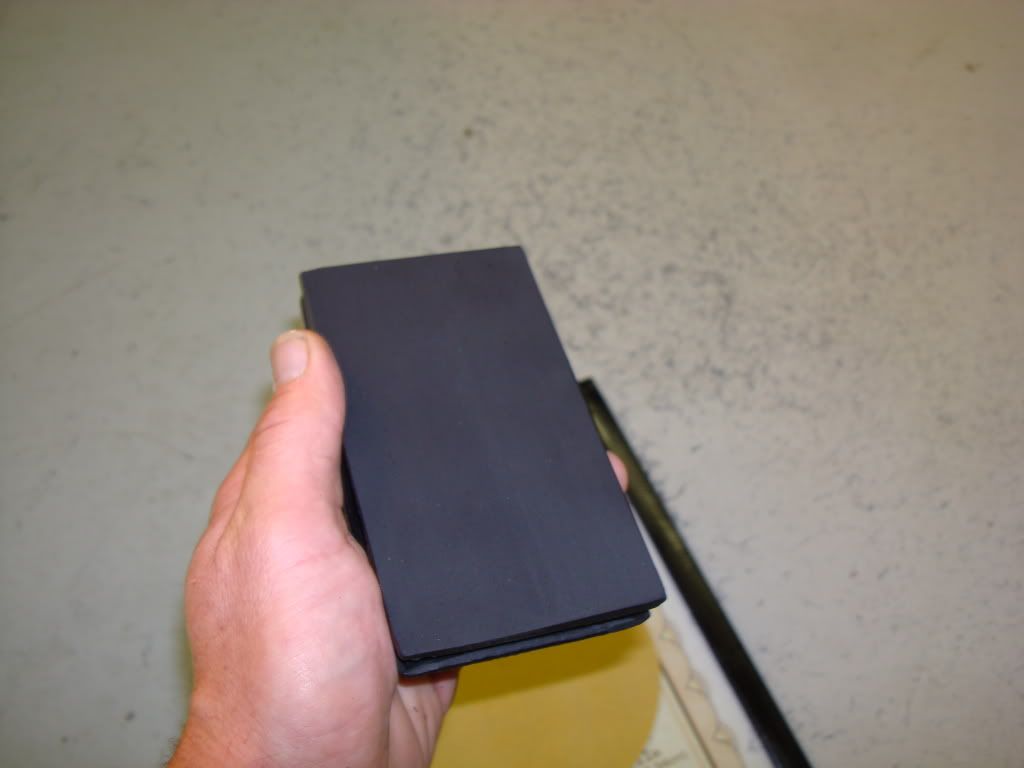Concours.John
Auto Detail & Restoration
There has been talk about wetsanding this is more focused on hard blocking. Most if not all hard blocks are not "true". The importance of this is on leading and trailing edges while sanding. I always have tried to purchase the best blocks I can find. It just seems they are not to my expectations. This is important because of the amount of material you may remove. This is based on the 3M hard block. Understanding with a hard rubber block you are removing material at a greater rate than a soft block.
No block is true.
Lets start with a brand new block,
Here i have made a few passes over a block over a peice of 180 sand paper across a 1/4 in. piece of glass with 180 stick it 3M. The dull spots indicate the high spots. The shiny spots are the lows sanding with this will create waves in the panels.

you can see the low spots here.

You need to continue while holding on to the sides while removing residue to keep the block flat, Rolling rubber will not true the block. Constantly clean residue.
This is further along in the process you can see the low spots the final picture gives a trued result.

I'd like to add here take the paper and round the edges to prevent
"checking" where the paper may grab and create a groove while sanding

No block is true.
Lets start with a brand new block,
Here i have made a few passes over a block over a peice of 180 sand paper across a 1/4 in. piece of glass with 180 stick it 3M. The dull spots indicate the high spots. The shiny spots are the lows sanding with this will create waves in the panels.

you can see the low spots here.

You need to continue while holding on to the sides while removing residue to keep the block flat, Rolling rubber will not true the block. Constantly clean residue.
This is further along in the process you can see the low spots the final picture gives a trued result.

I'd like to add here take the paper and round the edges to prevent
"checking" where the paper may grab and create a groove while sanding

